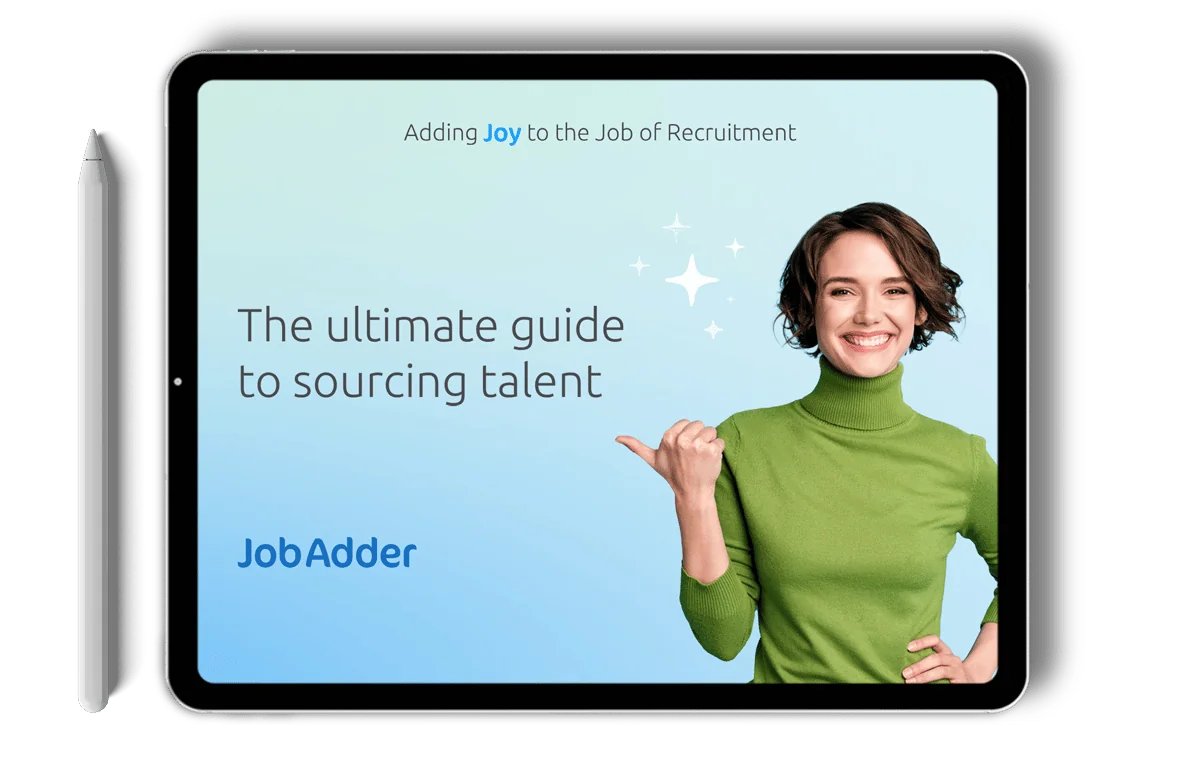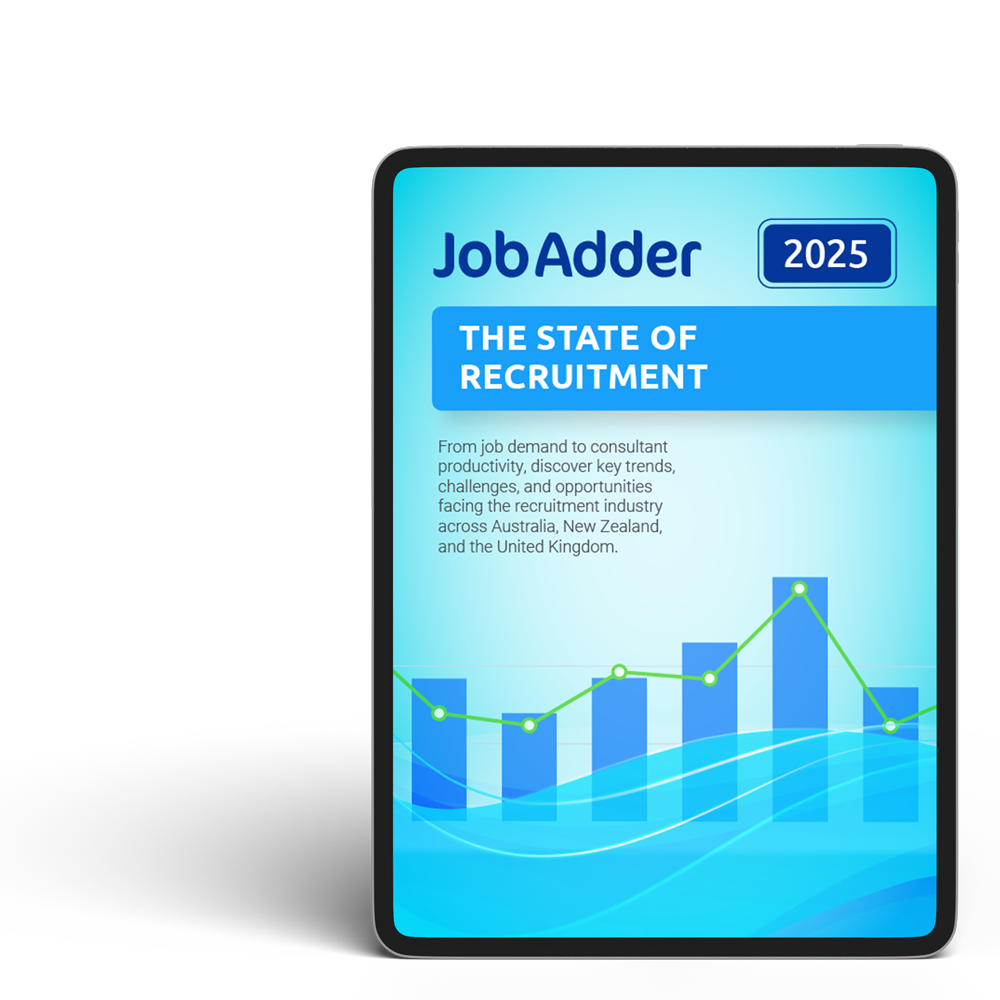Recruitment Blog
What is recruitment?

Recruitment is the process of finding and attracting top talent to your organisation. Recruitment is more than just hiring, and you shouldn’t think about recruitment only when you have a job to fill. Recruitment is an ongoing process that uses multiple outlets to identify and attract new talent to your team.
Recruitment strategies vary from company to company. A local small business might not have any dedicated recruiters, while a global organisation might have entire teams dedicated to recruitment.
A long-term recruitment strategy is an important part of your organisation’s business plan. Finding talent when you have an opening is much more difficult if you don’t have a pipeline already in place.
ACCESS OUR FREE EBOOK: The ultimate guide to sourcing talent
Recruitment and the recruitment process
Recruitment is the continuous process of locating, identifying, attracting and hiring prospective candidates. It refers to the whole hiring cycle, from job advertising to the selection process, onboarding new hires and maintaining a talent pool to draw in more candidates.
What does a typical recruitment process look like?
Below, we’ve done a basic breakdown of the recruitment process into 10 steps.
- Identify a missing skillset at your company or a vacancy that you need to fill.
- Devise a recruitment strategy: What does your ideal candidate look like? What are his or her skills? Where might you find this candidate?
- Write a job posting, including the following:
- Job description with its requirements and core competencies
- Salary
- Company culture
- Application instructions
- Advertise the job posting on job boards and social media. You should also reach out to your network to help you identify potential candidates and share the job listing.
- Review applications and shortlist the strongest candidates.
- Start the interview process.
- Decide on the right candidate.
- Make an offer.
- Onboard the candidate.
- Continue to build brand awareness and grow your company’s support network.
Types of recruitment
There are several types of recruitment. An organisation might use multiple recruitment methods in tandem or may prefer to use just one type of recruiting strategy.
- Inbound recruiting: Inbound recruiting means using your company brand to attract potential candidates, and then converting those candidates into employees. There should be brand ambassadors and promoters who spread the word about your organisation to other potential talent.
- Outbound recruiting: Outbound recruiting means you don’t worry about continuously attracting new talent. You look for candidates only when the need arises to fill a position.
- Internal recruitment: Internal recruitment is the process of “promoting from within” or filling job vacancies from your existing workforce. The advantage to doing this is that your new hire will come pre-loaded with a lot of institutional knowledge.
- Contingency recruitment: Contingency recruiting is a method of recruitment process outsourcing. Your business hires a contract recruiter or recruiting agency to find candidates for your open position. The agency only gets paid when you hire a candidate they found.
- Retained recruitment: Retained recruiting is similar to contingency recruiting, except the recruiter is paid upfront, or is given a scheduled fee, and works exclusively for your company. A retained recruiter is usually the only person or agency working on the recruitment process.
Recruitment best practices
There are a few best practices to follow when implementing a successful recruitment strategy. We have outlined them below.
Design a methodical and replicable recruitment process
Your strategy for seeking out new hires should be both efficient and effective. It should be well-defined and easily replicated so that turnover in your hiring team does not affect your hiring process.
Streamline as many tasks as possible. This is where recruitment software like an Applicant Tracking System (ATS) and candidate management software (CMS) is critical. These software solutions provide a centralised location for candidate data and communications history.
Maintain a talent pool and talent pipeline
A talent pool is a collection of potential candidates who have shown an interest in working for your organisation. They could be previous job applicants, or you may have attracted them through social media, an email newsletter, job sites or blogs. They may even be customers or users of your product.
A talent pipeline corresponds to the current state of each candidate in your talent pool. Some may be passive candidates—someone you’re considering who’s not actively looking for a role—while others are active job seekers.
Utilise recruitment analytics
Data and analytics can give you great insight into how well your recruitment processes are working.
A few key metrics, such as cost to hire and time to hire, go a long way in helping you analyse your recruiting success. For example, if a candidate has a high cost to hire but becomes a long-term employee for your company, the return on investment (ROI) for that candidate is strong.
Need help building your talent pool? Download our ultimate guide to sourcing talent.

Who typically handles the recruiting process?
Several people are involved in the recruiting process, and each plays a slightly different role. Ultimately, it’s the hiring manager who makes the final hiring decision and who’s responsible for the outcome of the hiring process.
A hiring manager is different from an HR manager. They may be involved in the recruitment process but do not make hiring decisions. A hiring manager is the person responsible for hiring the candidate and is usually a supervisor on the team the new hire will join.
A recruiter is typically responsible for laying the foundation for hiring the right people. A recruiter’s responsibility is to build a talent pipeline, train hiring managers on interviewing techniques and recommend techniques to help assess candidates objectively.
Recruitment process vs hiring process vs talent acquisition
These three terms get used interchangeably, but all three have slightly different definitions. While the end goal of each is the same—attracting and hiring the best talent possible—the purposes of each are different.
The recruitment process is the process of continuously attracting and hiring top talent for positions throughout the company. It involves building brand awareness, identifying job seekers, advertising vacancies, hiring and onboarding.
The hiring process is a subsection of the recruitment process. This part of the process is all about filling a job vacancy with a candidate with the right skillset.
Talent acquisition is similar to recruiting, however, it involves continually attracting and retaining top talent by an in-house team, rather than utilising recruitment agencies and contractors. Talent acquisition focuses on long-term human resources planning.
The importance of a recruitment process that works
The most important resource a business has is its human capital. Good employees are the lifeblood of an organisation and are crucial to long-term success. Unfortunately, they’re often the most difficult asset to find and retain.
Attracting qualified candidates can be tricky, particularly if you don’t have a large talent pool or functioning talent pipeline.
An efficient, effective and methodical recruitment process is your best tool for engaging with potential candidates, getting them through your pipeline and improving your employee retention.
Build your recruitment process with JobAdder
JobAdder’s ATS streamlines the entire recruitment process, whether you’re a recruiter or part of an in-house talent team.
Beyond simplifying and automating recruitment tasks, our ATS also provides AI and skill matching, native job posting, reporting and analytics insights as well as database management and communications tracking. Find out more about how the JobAdder ATS can transform your recruitment process by booking a no-obligation demo now.
Related blog posts

AI is fast becoming a mainstay in the way we work. Savvy recruiters already understand this and are finding ways …
Ready to get started?
Talk to one of our friendly team members


